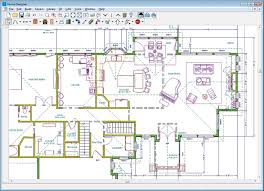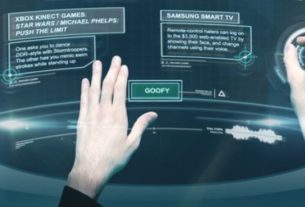BAMRA APPLICATION LOGIC PROGRAM INTERFACE
BAMRA APPLICATION LOGIC PROGRAM
PROGRAM TITLE
PROGRAM TITLE DISPLAYED ON SCROLLING DISPLAY OF MLKII
FOR C1 PROGRAM
MICROLOK_II PROGRAM BMB_C1_S01;
FOR C2 PROGRAM
MICROLOK_II PROGRAM BMB_C2_S01;
LOCAL BIT DEFINITIONS
BOARD: J1
ADJUSTABLE ENABLE: 1
TYPE: NV.IN32.OUT32
NV.OUTPUT:
1DGKE, 1RGKE, 1UGKE, 1.C1AJKE,
C1HGKE, SH3_OFFKE, SH3_ONKE, SH3AJKE,
SH5_OFFKE, SH5_ONKE, SH5AJKE, 8DGKE,
8RGKE, 8.SH8AJKE, SH8_OFFKE, 10HGKE,
10RGKE, 10.SH10AJKE, SH10_OFFKE, 12HGKE,
12RGKE, 12.SH12AJKE, SH12_OFFKE, 14DGKE,
14RGKE, 16DGKE, 16RGKE, UD_DGKE,
UD_HGKE, UID_DGKE, UID_HGKE;
BOARD: J1
ADJUSTABLE ENABLE: 1
TYPE: NV.IN32.OUT32
NV.INPUT:
1GN, C1GN, SH3GN, SH5GN,
8GN, SH8GN, 10GN, SH10GN,
12GN, SH12GN, 14GN, 16GN,
14ATUN, DD1UN, DD2UN, CLUN,
DLUN, DMUN, UMUN, SDUN,
21WN, 22WN, 23WN, 25WN,
SPARE, SPARE, 28KTN, 24LXN,
CH1N, CH2N, CH3N;
BOARD: J1
ADJUSTABLE ENABLE: 1
TYPE: OUT16
OUTPUT:
1DR, 1HR, C1HR, 1BUR,
1CUR, SH3HR, 6DR, 6HR,
SH6HR, 8HR, SH8HR, 12DR,
SH15HR, UD_DR, UID_DR, UID_HHR;
BOARD: J7
ADJUSTABLE ENABLE: 1
TYPE: IN16
INPUT:
SH15_OFFECR, SH15_ONECR, UD_DECR, UD_HHECR,
UD_HECR, UID_DECR, UID_HHECR, UID_HECR,
16NWK1R, 16RWK1R, 17NWK1R, 17RWK1R,
18NWK1R, 18RWK1R, 19NWK1R, 19RWK1R;
SERIAL BIT DEFINITIONS
ADDRESS: 20
ADJUSTABLE ENABLE: 1
OUTPUT:
// VITAL SERIAL OUTPUT TO I/O GATHERER MICROLOK
// MAXIMUM 128 OUTPUT BITS (16BYTES) CAN BE DEFINED IN THIS ADDRESS SECTION.
IVSL_COMOK.ISO,
1DR.ISO, 1HR.ISO, C1HR.ISO, 1BUR.ISO,
1CUR.ISO, SH3HR.ISO, 6DR.ISO, 6HR.ISO,
SH6HR.ISO, 8HR.ISO, SH8HR.ISO, 12DR.ISO,
SH15HR.ISO, UD_DR.ISO, UID_DR.ISO, UID_HHR.ISO,
16WNR.ISO, 16WRR.ISO, 17WNR.ISO, 17WRR.ISO,
18WNR.ISO, 18WRR.ISO, 19WNR.ISO, 19WRR.ISO;
ADDRESS: 20
ADJUSTABLE ENABLE: 1
INPUT:
// VITAL SERIAL INPUT TO I/O GATHERER MICROLOK
// MAXIMUM 128 INPUT BITS (16BYTES) CAN BE DEFINED IN THIS ADDRESS SECTION.
1DECR.ISI, 1HECR.ISI, 1RECR.ISI, C1HECR.ISI,
1UECR.ISI, 6DECR.ISI, 6HECR.ISI, 6RECR.ISI,
8HECR.ISI, 8RECR.ISI, 12DECR.ISI, 12RECR.ISI,
UD_DECR.ISI, UD_HHECR.ISI, UD_HECR.ISI, UID_DECR.ISI;
SERIAL LINK PARAMETERS
LINK: IVSL // ANY USER SELECTED TEXT STRING
ADJUSTABLE ENABLE: 1
PROTOCOL: MICROLOK.MASTER // GENISYS.SLAVE, GENISYS.MASTER,
// MICROLOK.SLAVE, MICROLOK.MASTER
// PHYSICAL PORT DEFINITIONS
ADJUSTABLE POINT.POINT: 1; // 0-FOR SLAVE PORT, 1-FOR MASTER PORT
ADJUSTABLE PORT: 2; // PORT 1 TO 4
ADJUSTABLE BAUD: 9600; // 150-19200 IN STEPS
ADJUSTABLE STOPBITS: 1; // 1 OR 2 (DEFAULT 1)
ADJUSTABLE PARITY: NONE; // ODD, EVEN MARK, SPACE, NONE(DEFAULT
ADJUSTABLE KEY.ON.DELAY: 12; // 0-280 FOR GENISYS & 8-280 FOR MLK
ADJUSTABLE KEY.OFF.DELAY: 12;
// PROTOCOL DEFINITIONS
ADJUSTABLE STALE.DATA.TIMEOUT: 4:SEC; // KEEP DEFAULT VALUE – 4 FOR MICROLOK
// AND 30:SEC FOR GENISYS PROTOCOL)
ADJUSTABLE POLLING.INTERVAL: 50:MSEC; // DEFAULT: 50 MSEC
ADJUSTABLE MASTER.TIMEOUT: 500:MSEC; // DEFAULT: 500MSEC,
// 30-5000MSEC – MICROLOK PROTOCOL
// 30-25000MSEC – GENISYS PROTOCOL
LINK: NVLMP //(ANY USER SELECTED TEXT STRING)
ADJUSTABLE ENABLE: 1
PROTOCOL: GENISYS.SLAVE // GENISYS.SLAVE, GENISYS.MASTER,
// MICROLOK.SLAVE, MICROLOK.MASTER
// PHYSICAL PORT DEFINITIONS
ADJUSTABLE POINT.POINT: 0; // 0-FOR SLAVE PORT, 1-FOR MASTER PORT
ADJUSTABLE PORT: 3; // PORT 1 TO 4
ADJUSTABLE BAUD: 9600; // 150-19200 IN STEPS
ADJUSTABLE STOPBITS: 1; // 1 OR 2 DEFAULT 1
ADJUSTABLE PARITY: NONE; // ODD, EVEN MARK, SPACE, NONE(DEFAULT
ADJUSTABLE KEY.ON.DELAY: 64; // 0-280 FOR GENISYS & 8-280 FOR MLK
ADJUSTABLE KEY.OFF.DELAY: 64;
// PROTOCOL DEFINITIONS
ADJUSTABLE STALE.DATA.TIMEOUT: 10:SEC; // DEFAULT VALUE – 4 FOR MICROLOK
// AND 30:SEC FOR GENISYS PROTOCOL
ADJUSTABLE CARRIER.MODE: CONSTANT; // CONSTANT OR KEYED
ADJUSTABLE CRC.SIZE: 16; // 16 OR 24 BITS, DEFAULT:16BITS
BOOLEAN BIT DEFINITION
BOOLEAN BITS
1.C1EGNR, C1UCSR, 2.C2EGNR, C2UCSR,
1ANNR, 1BNNR, 1CNNR, C1ANNR,
1ANRR, 1BNRR, 1CNRR, C1ANRR,
OV5NNR, OV6NNR, OV7NNR, OV1_8NNR,
OV5JSLR, OV5JR, OV5SR, OV6JSLR,
16NLR, 16RLR, 17NLR, 17RLR,
1UCR, C1UCR, 2UCR, C2UCR,
1.C1TSR, 2.C2TSR, SH3TSR, SH4TSR,
1.C1ALSR, 2.C2ALSR, SH3ALSR, SH4ALSR,
1.C1UYR1, 1.C1UYR2, 1.C1UYR3, 1.C1UYR4,
CH1LR, CH1NR, CH1RR, CH2LR,
CPS.STATUSJ2, CPSJR, SYSINITTMR, SYSINITTMR1,
TIMER BIT DEFINITION
TIMER BITS
EW_N.R_CR: SET=0:SEC CLEAR=1:SEC;
EUUYNPR: SET=0:SEC CLEAR=1:SEC;
OV5JSLR: SET=0:SEC CLEAR=1:SEC;
OV5JBPR: SET=0:SEC CLEAR=1:SEC;
OV5JR: SET=120:SEC CLEAR=0:SEC;
1.C1JSLR: SET=0:SEC CLEAR=1:SEC;
1.C1JBPR: SET=0:SEC CLEAR=1:SEC;
1.C1JR: SET=120:SEC CLEAR=0:SEC;
CPS.STATUSJ2: SET=0:SEC CLEAR=2:SEC;
SYSINITTMR: SET=130:SEC CLEAR=0:SEC;
FLASH: SET=700:MSEC CLEAR=700:MSEC;
LOG BIT DEFINITION
LOG BITS
1.C1EGNR, C1UCSR, 2.C2EGNR, C2UCSR,
1ANNR, 1BNNR, 1CNNR, C1ANNR,
1ANRR, 1BNRR, 1CNRR, C1ANRR,
OV5NNR, OV6NNR, OV7NNR, OV1_8NNR,
OV5JSLR, OV5JR, OV5SR, OV6JSLR,
16NLR, 16RLR, 17NLR, 17RLR,
1UCR, C1UCR, 2UCR, C2UCR,
1.C1TSR, 2.C2TSR, SH3TSR, SH4TSR,
1.C1ALSR, 2.C2ALSR, SH3ALSR, SH4ALSR,
1.C1UYR1, 1.C1UYR2, 1.C1UYR3, 1.C1UYR4,
CH1LR, CH1NR, CH1RR, CH2LR,
CPS.STATUSJ2, CPSJR, SYSINITTMR, SYSINITTMR1,
CONSTANT BIT DEFINITION
BOOLEAN:
ONE=1; ZERO=0;
NUMERIC:
INSTALLATION_ADDRESS = 51721;
APPLICATION_DATA_VERSION = 07;
EXECUTIVE_SOFTWARE_VERSION = 401;
SYSTEM CONFIGURATION
SYSTEM
ADJUSTABLE DEBUG_PORT_ADDRESS: 1;
ADJUSTABLE DEBUG_PORT_BAUDRATE: 19200;
ADJUSTABLE LOGIC_TIMEOUT: 3000:MSEC; //100MSEC-5SEC
STEP 100MSEC
ADJUSTABLE DELAY_RESET: 100:MSEC; //0-10SEC STEP
100MSEC
NUMERIC BIT DEFINITION
USER NUMERIC
CONFIGURATIONELEMENT_ADDRESS: “INSTALLATION ADDRESS”;
CONFIGURATIONELEMENT_APPLICATION_DATA_VERSION:
“APPLICATION DATA VERSION”;
CONFIGURATIONELEMENT_EXECUTIVE_SOFTWARE_VERSION:
“EXECUTIVE SOFTWARE VERSION”;
LOGIC SECTION
Panel PC Change over Logic
Operator PC Serial Input Timer Logic
Push Button Logic
Emergency Operation Push Button Logic
EGNR & UCSR Logic
Signal NNR & NRR Logic
Overlap Logic
Point NLR & RLR Logic
Point Chain Logic
Point WNR & WRR Logic
Point Detection Logic
UCR Logic
TSR Logic
Signal ALSR, JSLR, UYR Logic
Point WLR Logic
Signal HR & DR Logic
Crank Handle & Siding Control Logic
Level Crossing Control Logic
Block Logic
Axle Counter Reset Logic
Signal Indication Logic
Point & Overlap Indication Logic
Track Circuit Indication Logic
Signal Failure Alarm Logic
Point Failure & Button Stuck Alarm Logic
System Initialization & Link Status Logic
FCOR Logic
Cardfile Identification Logic
COMPILATION TECHNIQUES
This chapter describes the command line operation of the Microlok II logic compiler and the formats of its output files. This chapter also covers the specific consistency checks that the compiler performs on the user’s application. The compiler is a 32-bit Windows compatible program. Details of the program language are included in chapter 3.
4.2 DEFAULT EXTENSIONS
If the user does not supply filename extensions, the compiler will assign the following extensions by default:
File Type Extension Extension
Application Source ML2
Listing MLL
Application MLP
4.3 RUNNING THE COMPILER
The compiler is configured in Text Editor Program. User can run the compiler by selecting proper compiler option in “Tool” menu of Editplus Program.
The compiler will return a non-zero value to the command processor if there were any errors during compilation or if there was any problem with the form or content of the command line. Otherwise, it will return zero.
The result of compilation will be displayed at the bottom of Editplus Program window if Text Editor is configured to do so.
4.5 LISTING INFORMATION
The listing file provides information about compiler-generated information in the application, as well as reports about usage of various resources defined in the application. The listing will show the date of compilation, and the version number and date of the compiler.
4.5.1 Source Listing
First in the listing is the source listing. It shows warnings, severe warnings, and errors as they relate to source lines. The listing also shows relevant statement numbers assigned by the compiler. Each line of the source listing has the form:
<line number> [<statement number>] <text of original source line>
If a line does not have an associated statement number, the <statement number> portion of the line will appear blank. Lines that will have statement numbers will be those with ASSIGN, NV.ASSIGN, EVALUATE, NV.EVALUATE, or IF statements.
Source Listing: Cont’d
The compiler generates statement numbers to aid in debugging. Errors and warnings reported by the executive refer to statements by statement number.
Warning, severe warning, and error messages in addition to any additional information that they may generate will be interspersed between the source listing lines.
Application Image Identification
After the source listing, the compiler presents enough information to correctly match the listing to the application. This information consists of:
Target type — Microlok II or MicroCab II
CRC of application image as used by the Microlok II Maintenance tool.
Checksum that would be seen on Flash EPROM programmer.
Unusual Numeric Summary
To call attention to the numeric variables with non-default minimum, maximum, error, or initial values, the compiler generates a table listing the following:
1.Numeric variable name
2.Numeric variable id number
3.Minimum value
4.Maximum value
5.Error value
6.Initial value
Unused Variable Summary
In order to call attention to variables that the system or the user defined but never used in logic, the compiler will generate a list of such bits. I/O points defined as SPARE will not appear in this list. It looks like:
<id number> <id name> <bit type>
Unassigned User-Defined Variable Summary
In order to call attention to variables that the user defined but were never assigned a value, the complier will generate a list of unassigned user-defined variables. This list will not include user defined INPUTs, because inputs cannot be the object of an ASSIGN or NV.ASSIGN statement.
The list looks like:
<id number> <id name> <bit type>
Unused User-Defined Variable Summary
In order to call attention to variables that the user defined but did not use, the complier will generate a list of unused user-defined variables.
The list looks like:
<id number> <id name> <bit type>
Bit Usage Summary
Information about each bit used in the system is also displayed in a table. This table lists the id number and id name. Also listed is the number of times it is used as a front contact, a back contact, a block trigger, a table trigger or a coded output.
Variables in numeric blocks may be assigned to multiple times. If the bit has multiple assignments to it, the next column shows the number of assignments. If there is only one, this column is blank.
After this, the compiler will list which type of target the variable is: assign, non-vital assign, input, user item, table or system.
Following this is the vitality of the bit. The table will indicate if the bit is vital or non-vital.
Next the nature of the definition is displayed. It indicates if the bit is an internal, user
configuration, output or input.
For example, part of a table might look like:
ID# ID Name FRONT BACK BLOCK TABLE CODE ASGN TARG VITAL
14 34R 0 0 0 0 0 ASGN VITAL OUT
123 1ASR 1 3 0 0 0 ASGN VITAL INT
125 TRIG 0 0 1 1 0 ASGN VITAL INT
126 ERROR 0 0 0 0 0 23 NASGN NON INT
Board Summary
I/O boards are summarized as the name and type of the board as well as the state any configuration parameters belonging to it. Entries for all boards will show the state of the enable as defined in the application as well as its fixed or adjustable status.
Comm Link Summary
Comm Links are summarized as the name and protocol of the link as well as the state any configuration parameters belonging to it. Entries for all links will show the state of the enable as defined in the application as well as its fixed or adjustable status. Also, the enabled state of each of the stations on the link will be displayed.
COMPILER CHECKS
In the course of processing the source file, the compiler can generate errors, warnings, and severe warnings. Errors are generated in response to source code that cannot be interpreted by the compiler as a meaningful program. Severe warnings are generated when the user input can be interpreted as a usable program, but the compiler makes corrections to the source code. Sever warnings are intended to notify the programmer of what corrections the compiler has made. Warnings are generated for inputs that may cause safe, but unusable behavior.
The following are a few examples of source code problems that would cause the various classes of messages to occur: Warnings (an application image is generated and can be used): Any board or link defined as FIXED and disabled. Severe warnings (an application image is generated): The user must check any of the following conditions to determine if a problem will result:
* Non-vital assignment to vital bit.
* Non-vital evaluate to vital numeric.
* Errors (an application image is not generated):
* Syntax errors
* Use of undefined bits


